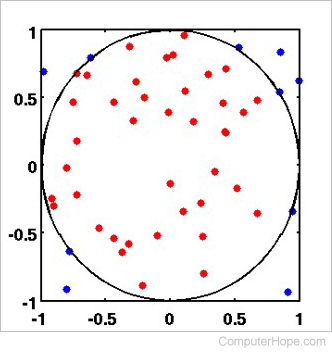Monte Carlo method

The Monte Carlo method is a group of algorithms that use repeated random sampling to achieve a result. It was named by Stanislaw Ulam while he was working on nuclear weapons projects at the Los Alamos National Laboratory, after the Monte Carlo Casino, where his grandfather often gambled.
Monte Carlo methods are frequently used in mathematics or physics problems. They can solve problems of optimization, numerical integration, and probability distribution. In physics, Monte Carlo methods are useful for simulating fluid dynamics and cellular structures. In economics, Monte Carlo methods can simulate uncertainty and risk in business ventures.
An example of using a Monte Carlo method would be to draw a unit circle inside a unit square and then scatter coins on the square in a uniformly random manner. By calculating the ratio of coins inside the circle to those falling outside (assuming all coins fell in the unit square), one could approximate the area of the circle. The more coins thrown, the closer the approximation would come to the actual area.
Convergence, Embarrassingly parallel, Markov chain, Optimization, Programming terms, Pseudorandom, Simulation
